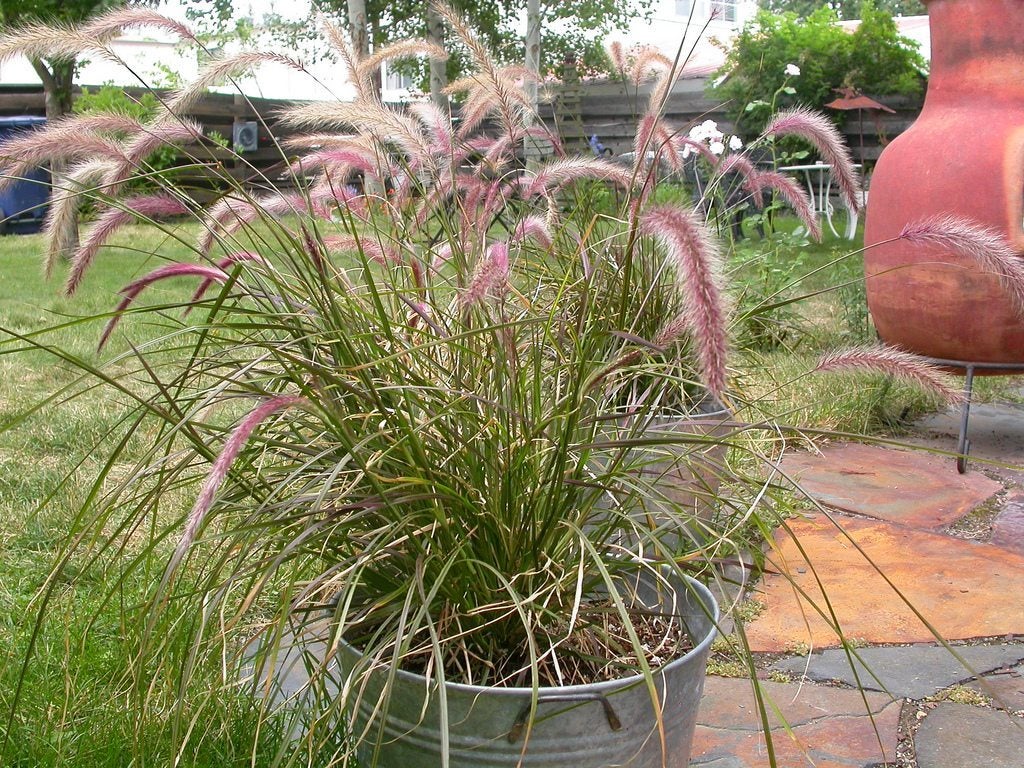Fountain Grass Trimming – How To Treat Brown Tips On Fountain Grass


Fountain grass is a common and extensive group of ornamental grasses. They are easy to grow and generally unfussy about their site, but the occasional brown tips on fountain grass can be a clue to incorrect site conditions, cultural care, or simply a natural part of the plant's physiology. There are several browning fountain grass causes, so read on for a few identification and diagnostic tools.
Why is My Fountain Grass Browning?
If you are unfamiliar with the types of ornamental grass, you may ask: "Why is my fountain grass browning?" Fountain grass is considered a warm season grass and it is natural for the previous season's growth to turn brown at the end of the growing season. In most regions, fountain grass trimming is necessary to enhance appearance and allow spring growth to shine without a frame of dead blades. If cool temperatures have arrived and you notice brown tips on fountain grass, it is likely just signaling the end of the growing season. As a warm season grass, older fountain grass growth responds by dying back. This is normal and allows for new growth to have sufficient space, air, and light in spring. Fountain grass trimming is helpful and visually appealing to remove the dying grass at the end of the season or just as the new season begins. Other browning fountain grass causes may be overwatering, excess fertilizer, pot bound plants, or burning caused by searing sunlight. Most of these causes are easy to remedy and should not affect the overall health of the plant significantly. To decide which situation may be causing the issue, you need to do a step-by-step evaluation of recent changes in the plant's situation.
Fixing Brown Tips on Fountain Grass
If it is not the end of the season and you see browning on your grass, the causes are likely cultural or situational. Fountain grass can tolerate and even thrive in partial sun locations. In full sun or areas with extreme heat and bright light all day, the tips of the grass may burn. The simple solution is to dig the plant up and situate it where there is some protection from the hottest rays of the day. You may also need to check the percolation of the site by digging a trench near the grass that is at least 3 inches (8 cm.) deep. Fill the hole with water and watch to see how quickly the water drains into soil. If water is still standing half an hour later, you will need to remove the plant and amend the planting site by adding some grit, such as fine horticultural sand or even compost. Dig it into a depth of at least 8 inches (20 cm.) to add porosity to soil and encourage drainage. Excess fertilizer issues can be fixed by leaching water out of a container to remove excess salt build up which can harm roots.
How to Prune Browning Fountain Grass
It is not necessary for the plant's health to remove the older grass, but it does improve the appearance of the plant when new growth arrives in spring. The most expedient method is to gather the leaf blades into a ponytail of sorts. This allows for easy, even cutting of all the leaves. Cut the blades when the plant is dormant, either at the end of the season or just before new growth arrives. Cut the grass back with pruning shears or grass clippers. Remove old growth to 4 to 6 inches (10-15 cm.) from the ground. In cooler climates, you can mound this trimmed plant material over the root zone as a mulch to prevent any cold damage to roots or you can compost the leaves. Correct timing is the most important step in how to prune browning fountain grass. Grasses trimmed when actively growing reduces the amount of energy they can store for use over the winter and to fuel spring growth.
Sign up for the Gardening Know How newsletter today and receive a free copy of our e-book "How to Grow Delicious Tomatoes".

Bonnie Grant is a professional landscaper with a Certification in Urban Gardening. She has been gardening and writing for 15 years. A former professional chef, she has a passion for edible landscaping.